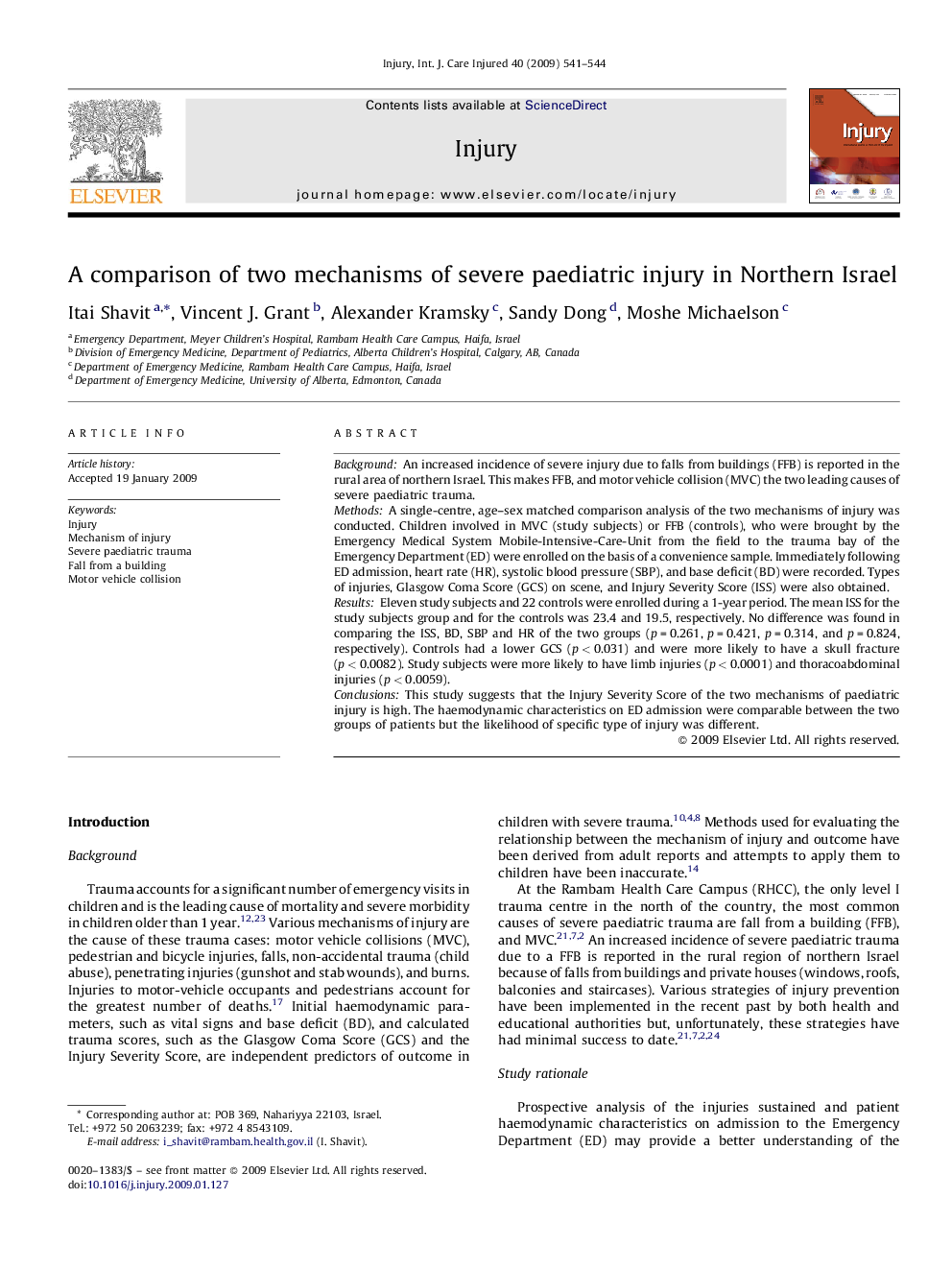| Article ID | Journal | Published Year | Pages | File Type |
|---|---|---|---|---|
| 3241294 | Injury | 2009 | 4 Pages |
BackgroundAn increased incidence of severe injury due to falls from buildings (FFB) is reported in the rural area of northern Israel. This makes FFB, and motor vehicle collision (MVC) the two leading causes of severe paediatric trauma.MethodsA single-centre, age–sex matched comparison analysis of the two mechanisms of injury was conducted. Children involved in MVC (study subjects) or FFB (controls), who were brought by the Emergency Medical System Mobile-Intensive-Care-Unit from the field to the trauma bay of the Emergency Department (ED) were enrolled on the basis of a convenience sample. Immediately following ED admission, heart rate (HR), systolic blood pressure (SBP), and base deficit (BD) were recorded. Types of injuries, Glasgow Coma Score (GCS) on scene, and Injury Severity Score (ISS) were also obtained.ResultsEleven study subjects and 22 controls were enrolled during a 1-year period. The mean ISS for the study subjects group and for the controls was 23.4 and 19.5, respectively. No difference was found in comparing the ISS, BD, SBP and HR of the two groups (p = 0.261, p = 0.421, p = 0.314, and p = 0.824, respectively). Controls had a lower GCS (p < 0.031) and were more likely to have a skull fracture (p < 0.0082). Study subjects were more likely to have limb injuries (p < 0.0001) and thoracoabdominal injuries (p < 0.0059).ConclusionsThis study suggests that the Injury Severity Score of the two mechanisms of paediatric injury is high. The haemodynamic characteristics on ED admission were comparable between the two groups of patients but the likelihood of specific type of injury was different.
